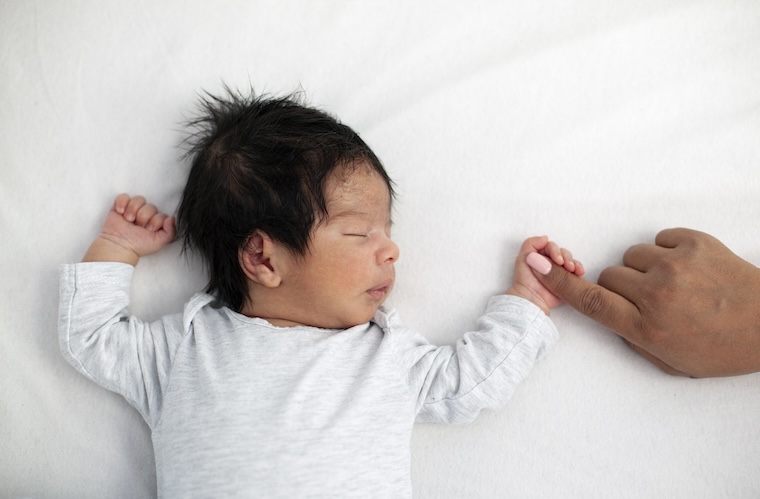
Safe-sleep practices including placing the baby in a crib or bassinet, rather than an adult bed or couch, and keeping the sleep space free of toys and soft goods.
There were multiple unsafe sleep practices at play in more than three-quarters of Sudden Unexpected Infant Deaths reported in 23 jurisdictions between 2011 and 2020, a new study reveals. The researchers say the findings underscore the need for more comprehensive safe-sleep education for new parents, including from healthcare providers.
Of 7,595 infant deaths reviewed, almost 60% of the infants were sharing a sleep surface, such as a bed, when they died. This practice is strongly discouraged by sleep experts, who warn that a parent or other bed partner could unintentionally roll over and suffocate the baby.
Infants who died while sharing a sleep surface were typically younger (less than 3 months old), non-Hispanic Black, publicly insured, and either in the care of a parent at the time of death or being supervised by someone impaired by drugs or alcohol. These infants were typically found in an adult bed, chair or couch instead of the crib or bassinet recommended by sleep experts.
“The large number of hazardous sleep practices for both infants who were sharing a sleep surface and sleeping alone at the time of death is alarming,” said researcher Fern Hauck, MD, MS, a safe-sleep expert at UVA Health and the University of Virginia School of Medicine. “These are known risk factors for SUID [Sudden Unexpected Infant Death], and tells us that we need to do a better job of working with families to increase acceptance of the recommendations to create safer sleep spaces for their infants.”
Sudden Unexpected Infant Deaths
To better understand the factors contributing to SUID and improve safe-sleep messaging, Hauck and her collaborators analyzed data from the federal Centers for Disease Control and Prevention’s SUID Case Registry. That data reflects localities from Alaska to Wyoming, including the Tidewater area of Virginia.
Examining the registry allowed the researchers to obtain important insights on the prevalence of practices such as prenatal smoking, a known risk factor for SUID, and breastfeeding, which is thought to have a protective benefit. More than 36% of mothers of infants who died had smoked while pregnant. This percentage was higher among moms who bed shared than those who didn’t, 41.4% to 30.5%. Both bed sharers and non-bed sharers had breastfed at similar rates.
The researchers note that it was rare for bedsharing to be the only risk factor present during a child’s death. The findings highlight the need for better public education about safe-sleep practices, and for care providers to take a more active role in teaching new parents about the practices, the researchers say.
“Our findings support comprehensive safe sleep counseling for every family at every encounter beyond just asking where an infant is sleeping,” the researchers write in a new paper in the journal Pediatrics.
In addition to helping parents understand safe-sleep practices, care providers should take steps to ensure parents can follow those practices once they leave the hospital. For example, some families may not have the means to purchase a crib or bassinet; a hospital might direct them to resources to help with that.
“SUID deaths in the U.S. are still higher than in most other countries, and this is unacceptable,” Hauck said. “Clinicians and others caring for infants need to have thoughtful conversations with families at risk to understand the barriers to following safe-sleep guidelines and find ways to work together to overcome them.”
About the SUID Research Team
The SUID research team consisted of Alexa B. Erck Lambert, Carrie K. Shapiro-Mendoza, Sharyn E. Parks, Carri Cottengim, Meghan Faulkner and Hauck. The researchers have no financial interest in the work.
To keep up with the latest medical research news from UVA, subscribe to the Making of Medicine blog



